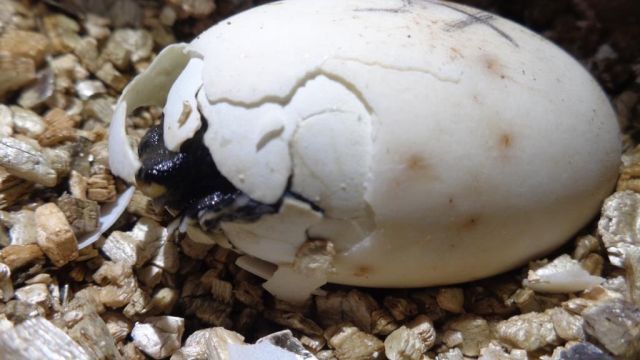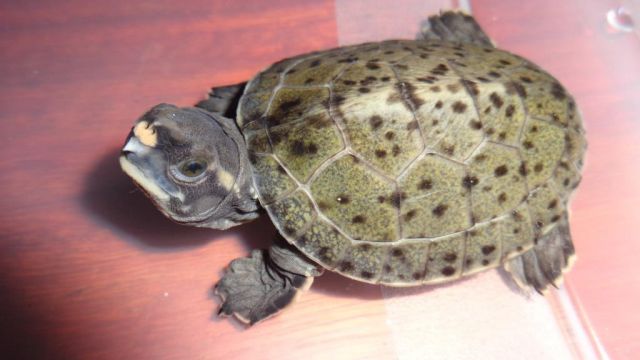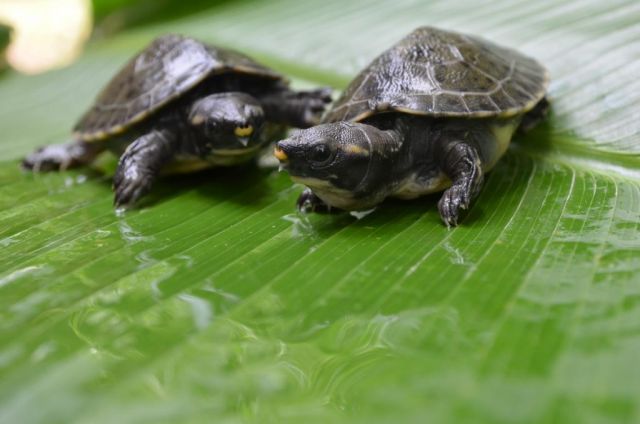First Turtles Hatch in Belize
by Heather Barrett 
Over a five-day period in mid-June, seven Central American River Turtles (Dermatemys mawii) hatched at the Hicatee Conservation and Research Center (HCRC). These are the first hatchlings in the captive breeding program established by the TSA at the HCRC based at the BFREE Field Station in southern Belize. Locally known as Hicatee, D. mawii is the only living representative of a formerly widespread group of turtles in the family Dermatemydidae. D. mawii is classified as Critically Endangered and has been eliminated through much of its range - southern Mexico, northern Guatemala and Belize.

The captive born turtles each took as many as two days to fully emerge once they pipped. They needed that time to absorb the remainder of their egg yolk through their umbilical cord and to learn to breathe air before beginning a journey in search of water. After exiting their egg shell, they clumsily moved around in the incubator and when they did not immediately encounter water, they burrowed into the vermiculite to wait.

The first hatchling emerged a full day before the others on June 14, although two others pipped at nearly the same time. The second turtle joined the next day. One emerged on June 16. We were surprised to note that the turtle that pipped and hatched on June 17 had apparently developed upside down in its egg – once hatched the turtle quickly embraced being right-side up and showed no apparent signs of problems. The last three hatchlings followed on June 18 – two during the early morning hours and one that evening.
On the first day of their lives outside the egg, each Hicatee was removed from the incubator and placed in a small sweater-box sized plastic container with holes drilled in the lid for air. The containers were filled halfway with water and outfitted with a small flat stone for perching and a floating upside-down bowl or banana leaf for hiding. Each Hicatee fumbled during its first minutes in the container as it learned to swim and to breathe under and above water.

The hatchlings, now two weeks old, are adapting to their new world. They have been moved into a larger container (approximately 36"L X 18"W X 8"H) and are living in two groups - four in one container and three in the second. These herbivores receive daily feedings of Paspalum grass, which is a native grass of Belize and the preferred food for adult Hicatee. In addition to p-grass, both groups are also feeding readily on a variety of leaves including fig, banana, sweet potato, Cecropia, and Cocoyam. In addition to leaves, fruits have been offered including papaya and mango, though the hatchlings don't seem particularly interested. Some meat items have been introduced such as fish, but have not been taken by the turtles. One of the groups received feces from the adults which they ate readily, in order to inoculate them with the appropriate gut microflora. The second group will wait to be inoculated for one month after hatching, in order to compare growth rates between the two groups. Feces of both groups are being collected twice per week, and will be analyzed for gut microflora by Nichole Bishop, a PhD student in the School of Natural Resources and Environment at the University of Florida, who is focusing her studies on the Hicatee at the HCRC and throughout Belize. All turtles are being observed daily, and are feeding both day and night, though they seem to be more active foragers during nighttime hours. In just two weeks, the hatchlings are noticeably growing.
We anticipate watching them grow and thrive in coming months and as rainy season is upon us – we look forward to more eggs followed by more hatchlings in 2016!
